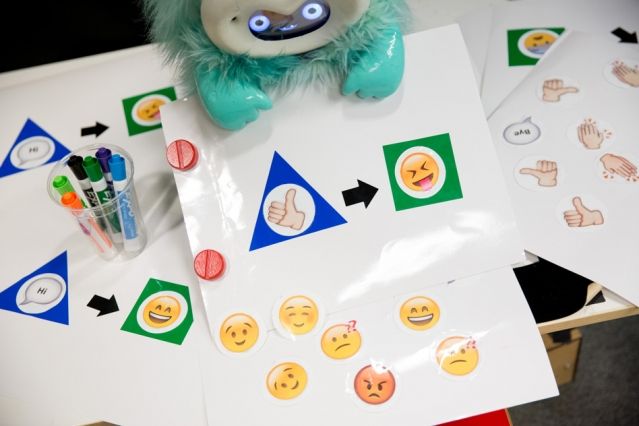Mar 27, 2015
Italian Researchers Expect 3D Printed Eyes by 2027, Providing Enhanced Vision & WiFi Connection
Posted by Seb in categories: 3D printing, bioprinting, biotech/medical
by Bridget Butler Millsaps — 3Dprint.com
There’s one thing you may have begun to notice about digital design and 3D printing: whatever you think might happen in the future is probably going to advance far beyond whatever you envisioned or thought might be a cool idea.
And literally, one day you may be envisioning your entire world, and recording it as well, through completely artificially constructed, 3D printed eyeballs. You may be able to say goodbye to prescription glasses and contact lenses — and even your camera, as your original retina is replaced by a new and digital network contained inside your head, and even able to be swapped out for different versions.Read more


 Researchers at the MIT Media Laboratory are developing a system that enables young children to program interactive robots by affixing stickers to laminated sheets of paper.
Researchers at the MIT Media Laboratory are developing a system that enables young children to program interactive robots by affixing stickers to laminated sheets of paper. If Hollywood’s depiction of artificial intelligence were accurate, we would be falling in love with operating systems, sharing our homes with Stepford wives, and fending off cyborg attacks by now. While movies like
If Hollywood’s depiction of artificial intelligence were accurate, we would be falling in love with operating systems, sharing our homes with Stepford wives, and fending off cyborg attacks by now. While movies like 

 I’m sitting in a desk chair in an office in Mountain View, California. But with a virtual-reality headset strapped to my head and headphones over my ears, it looks and sounds like I’m standing in the belly of a blimp, flying high above silent city blocks dotted with billboards for a Despicable Me theme-park ride.
I’m sitting in a desk chair in an office in Mountain View, California. But with a virtual-reality headset strapped to my head and headphones over my ears, it looks and sounds like I’m standing in the belly of a blimp, flying high above silent city blocks dotted with billboards for a Despicable Me theme-park ride.







